The Artful Parent’s list of the best art tools for kids to encourage art making in the home or school environment.
Updated February 2022
As parents, we tend to place a lot of emphasis on the kids’ art materials – the best paints, markers etc, but the kids art tools, get overlooked, even though they are equally important.
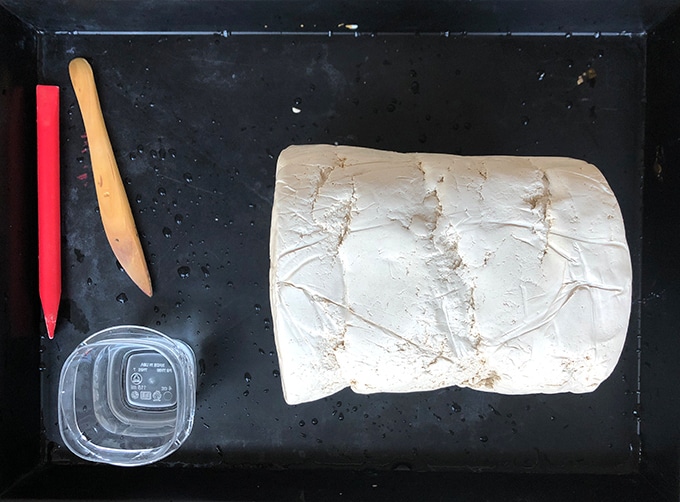
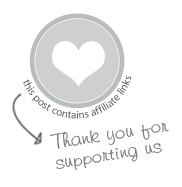
BEST Kids Art Tools
To inspire creativity, keep little hands and minds busy, and to get a moment of peace as a parent, it pays to have the best art tools for kids stocked up and close by.
They are lifesavers for rainy days or days when the kids are bored in the house and wanting to flex those creative muscles.
So, here is our list of the tools we use to make our kids’ art experience as successful as possible.
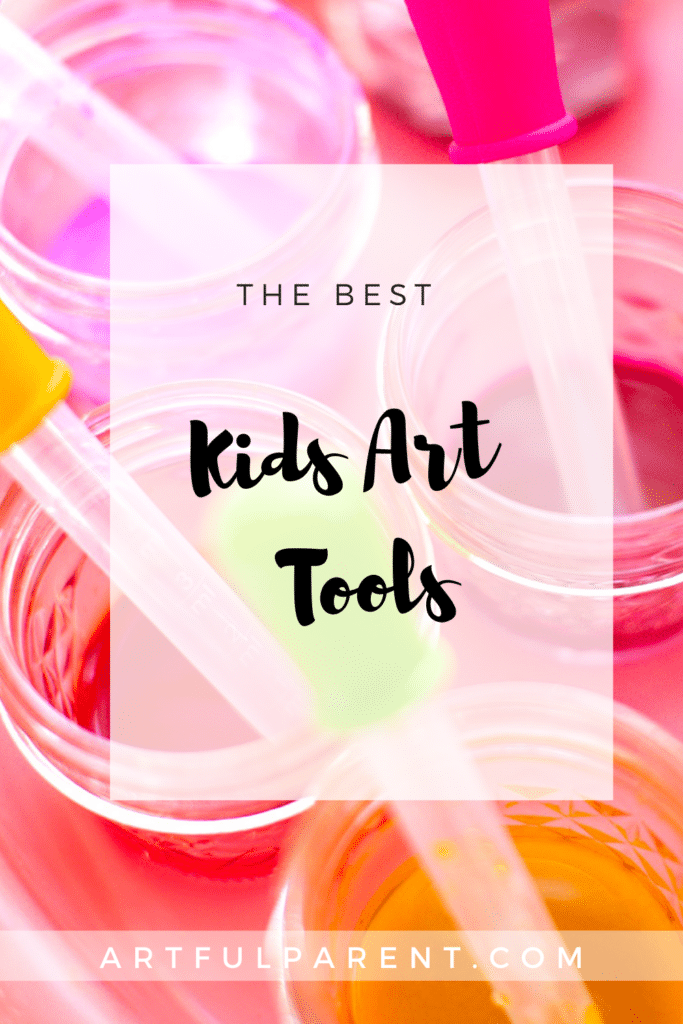
Basic Kids Art Tools
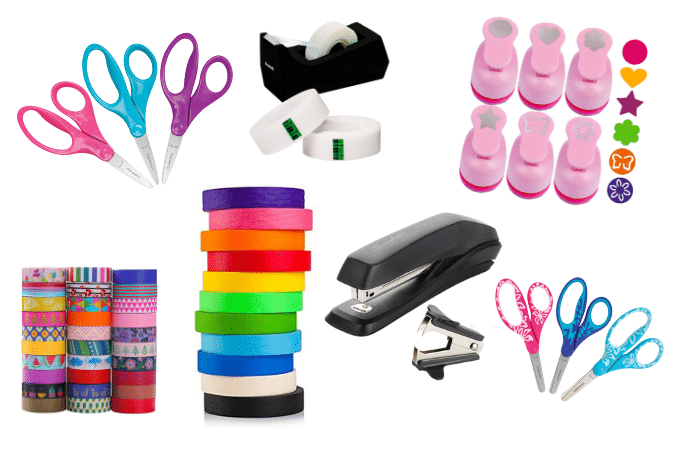
1. Scissors
For making things the size and shape you want them to be. We like Fiskars brand because they have blunt tip scissors for younger children and pointed tip scissors for kids who are a little more experienced!
2. Hole Punch
Kids LOVE punching holes! The regular hole punches that we all know can be frustrating for little hands to manipulate, though. You can find packs of craft hole punches perfect for kids to use! And they come in lots of fun shapes!
3. Stapler
We use our sturdy little Swingline stapler all the time.
4. Tape and Tape Dispenser
A sturdy and heavy tape dispenser can make getting (Scotch-type) tape much easier for little kids!
5. Masking Tape
For holding the edges of paper down, for tape resist art projects, for hallway hopscotches, for hanging art on the wall, and for collages. We use both regular masking tape and colored masking tape. Plus printed craft tape.
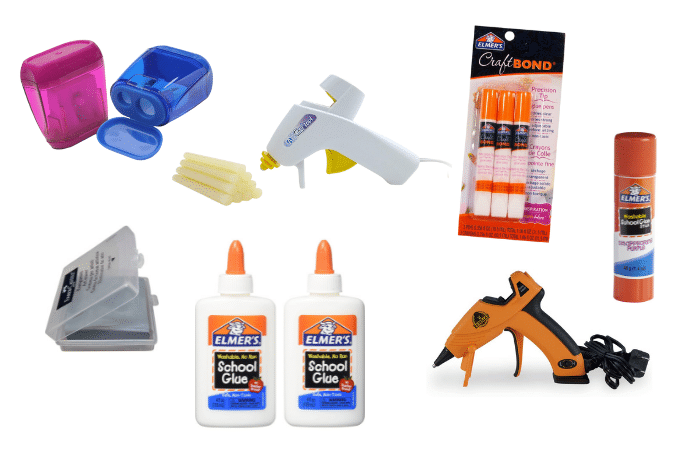
6. Pencil Sharpener
We like a double pencil sharpener, because it works well for regular pencils and colored pencils (both thin and thick), is easy to use, and keeps the the shavings off the desk.
7. Eraser
We’re suckers for fun erasers, but for everyday art use, not much beats a good ole kneaded rubber eraser. A kneaded eraser can be shaped for more precision erasing. It can also be used to create highlights.
8. Glue
We put glue as one of our top ten art supplies, but it seems to be as much a tool for art as an actual art material so we’re adding it here, too. Besides the glue bottles, we use glue sticks, glue pens, and a glue gun. Try a low heat glue gun for young children.
Kids Art Tools for Painting
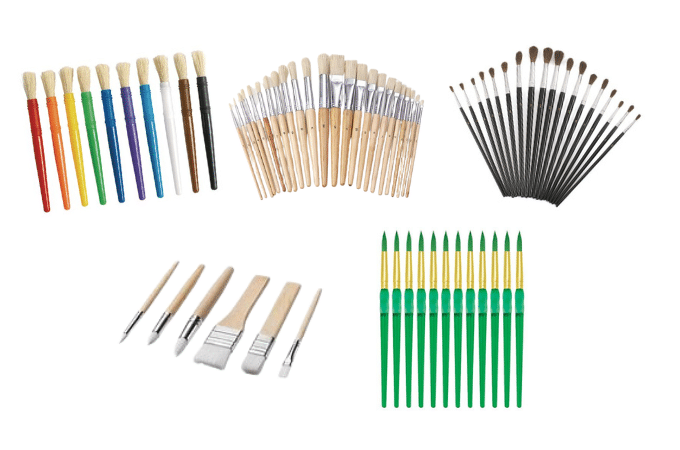
1. Paint Brushes
It’s tricky to find a good paint brush that meets all the criteria but here are a few that we like:
- For toddlers: Colorations Plastic Chubby Paint Brushes (inexpensive & easy to clean)
- For watercolors & detail painting: Colorations Watercolor Brushes (inexpensive, nice soft bristles, variety of sizes) or Royal brushes are long lasting and sturdy.
- Good all around brushes: IKEA’s Mala brushes has a great value and these brushes feel nice when using them.
- For bigger artwork or easel painting: Colorations Best Value Easel Paint Brush Assortment (inexpensive, variety of sizes).
2. Droppers
Great for transferring liquid watercolor paint to paper, coffee filters, ice, baking soda, etc. We use these all the time for both art projects and science experiments.
- Candy droppers make the perfect pipette for toddlers & preschoolers.
- Eye droppers or pipettes for bigger kids.
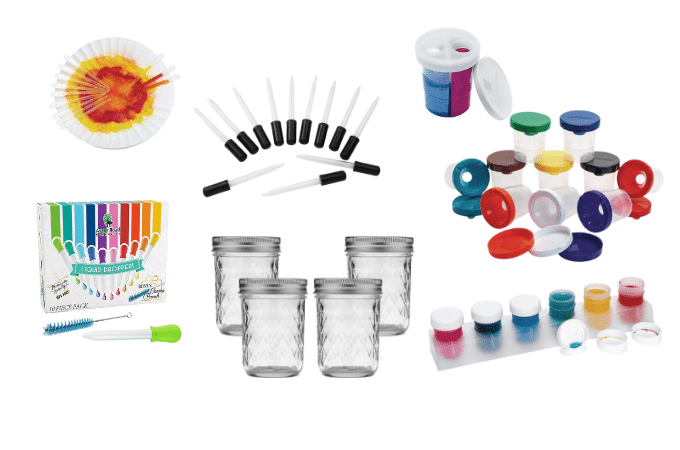
3. Paint Cups
For holding paint during an art activity and storing extra paint until the next art activity. These no-mess paint cups are great basic ones. If your kiddo likes more color choices (especially at the easel where space is at a premium), then use the double-dip paint cups.
And for liquid watercolors, we really like these smaller paint cups in a base.
You can also just use miscellaneous cups and bowls for holding your paints. We use small mason jars and recycled jam jars a lot. (A better fit for pre-k and up as they are glass).
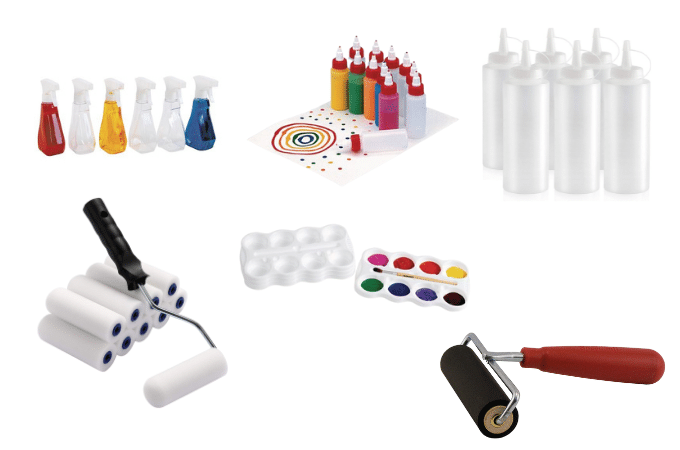
4. Spray Bottles
For spray painting with watered-down liquid watercolors on paper, fabric, snow. Or for spraying water on the chalkboard or outside. You can generally pick these up at the dollar store and other places for cheap.
5. Paint Trim Roller
These are like the paint rollers you use for painting your walls, but smaller and meant for trim and corners and such. We use ours in the studio for kids’ art because rolling paint is lots of fun. We buy ours from the paint section of the hardware store.
6. Squeeze Bottles
For puffy paint and other fun squeeze painting ideas. You might find these at your local dollar store or can find a bigger version on Amazon. Discount School Supply’s smaller squeeze bottles are nice for younger children and don’t use as much paint to fill them up.
7. Brayer
We use one of these for most printmaking projects.
8. Acrylic Box Frame
These are really for framing your artwork, but we keep a couple in the studio for printmaking purposes. We roll the ink or paint over the surface of the frame to coat the roller or brayer evenly. We especially like the box frame for monoprinting with kids.
9. Palette
We have a cheap plastic paint palette that we use sometimes for acrylic paints, tempera paints, and paint mixing. But, mostly we just use cheap paper plates because you can toss them afterwards and it’s one little thing we can do to make clean up easier and quicker.
10. Hands / Toys / Nature Items
Because hands are great for transfering paint, printing, sculpting, etc. Car wheels and other toys can also be fun for painting. So are pine branches, flowers, and various nature items.
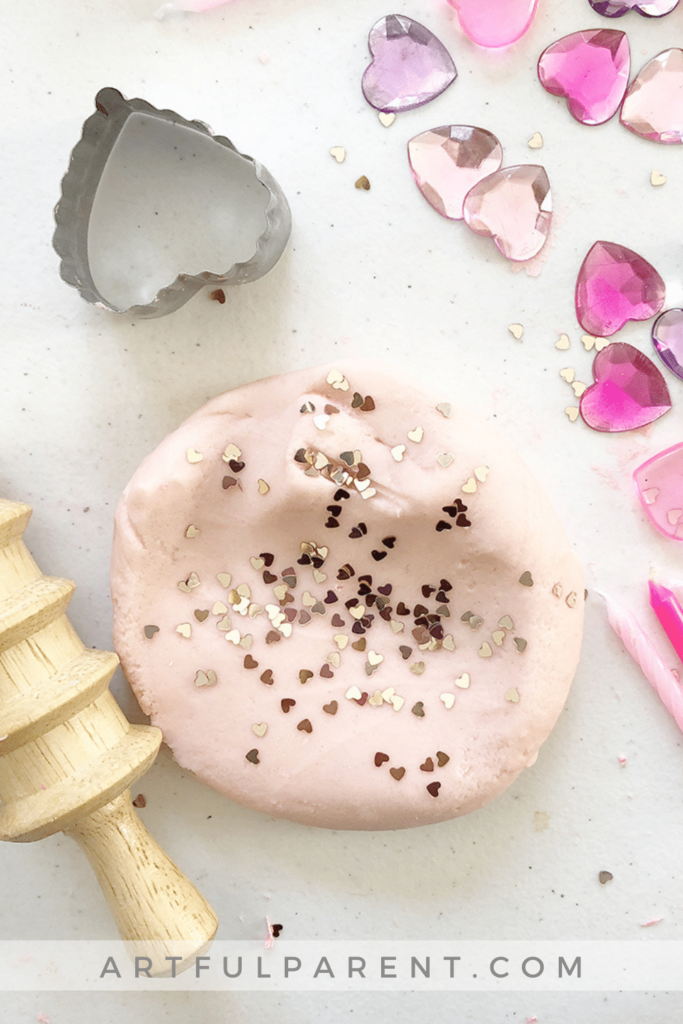
Kids Art Tools for Working with Clay and Playdough
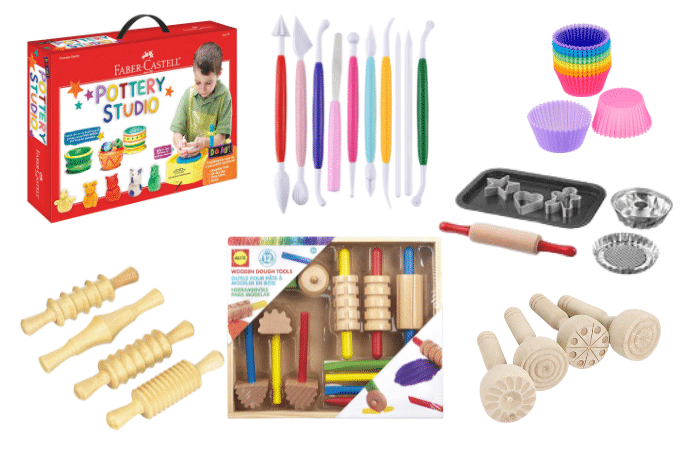
1. Clay Sculpting Tools
2. Playdough Tools
- Our favorite playdough tool set
- Additional rollers
- Wooden stampers
- IKEA kids baking set
- Silicone baking cups
3. Mat
We use plastic art mats or placemats, both with clay and with other arts and crafts activities.
4. Pottery Wheel
We like this pottery wheel by Creativity for Kids and you can read an entire post and review of it
Tools to Protect Furniture & Clothing
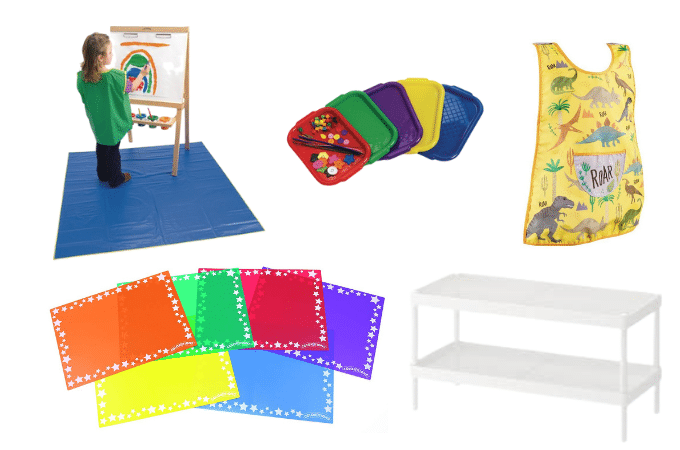
1. Art Trays
We really like these art trays and use them all the time. These are well worth getting and really help keep the art messes contained. You could also just use an old rimmed cookie sheet, if you have one.
2. Art Mats
Art mats – otherwise known as placemats (in fact, you can also use cheap placemats!). These are good for protecting the table when you’re drawing, doing a less-messy collage, playing with playdough, using clay, etc. In other words, when you don’t think you’ll need the rim of the art tray to keep glitter or paint from getting everywhere.
3. Drop Cloth
Pick up a cheap waterproof tablecloth at the dollar store. Or try this Brawny Tough Keep-It-Clean Mat –– we have it and it does the job, but it’s stiff and better for the floor than the table.
For the table, we either use an old tablecloth that can go in the wash or the above-mentioned vinyl tablecloth.
4. Art Smock
Make your own from a large T-shirt. Or just wear a large T-shirt. Most kids’ art smocks are either apron-types that don’t have any type of sleeve (and we know how little kids get paint everywhere) or have sleeves but are made of some stiff, crinkly waterproof material that hampers arm movement and that kids just aren’t going to be comfortable in.
But if you want to buy one, we like this Floss & Rock apron for kids.
5. Drying Rack
You’re gonna want to have someplace you can set the paint-y masterpieces while they dry. We have some wires strung across one of the studio walls (in between hook eye screws) that we use for hanging just-finished artwork with clothespins.
For art that is extra paint-goopy, extra glue-y, 3-D, or involves foam paint/shaving cream, you need some sort of flat horizontal space. You can set them on countertops are tabletop surfaces to dry but it’s nice to have a separate spot for those hours of drying time.
IKEA’s shoe rack is a good solution and cheaper than a traditional drying rack. We had a version similar to this one that you might try.
We use this inexpensive set for clay sculpting.
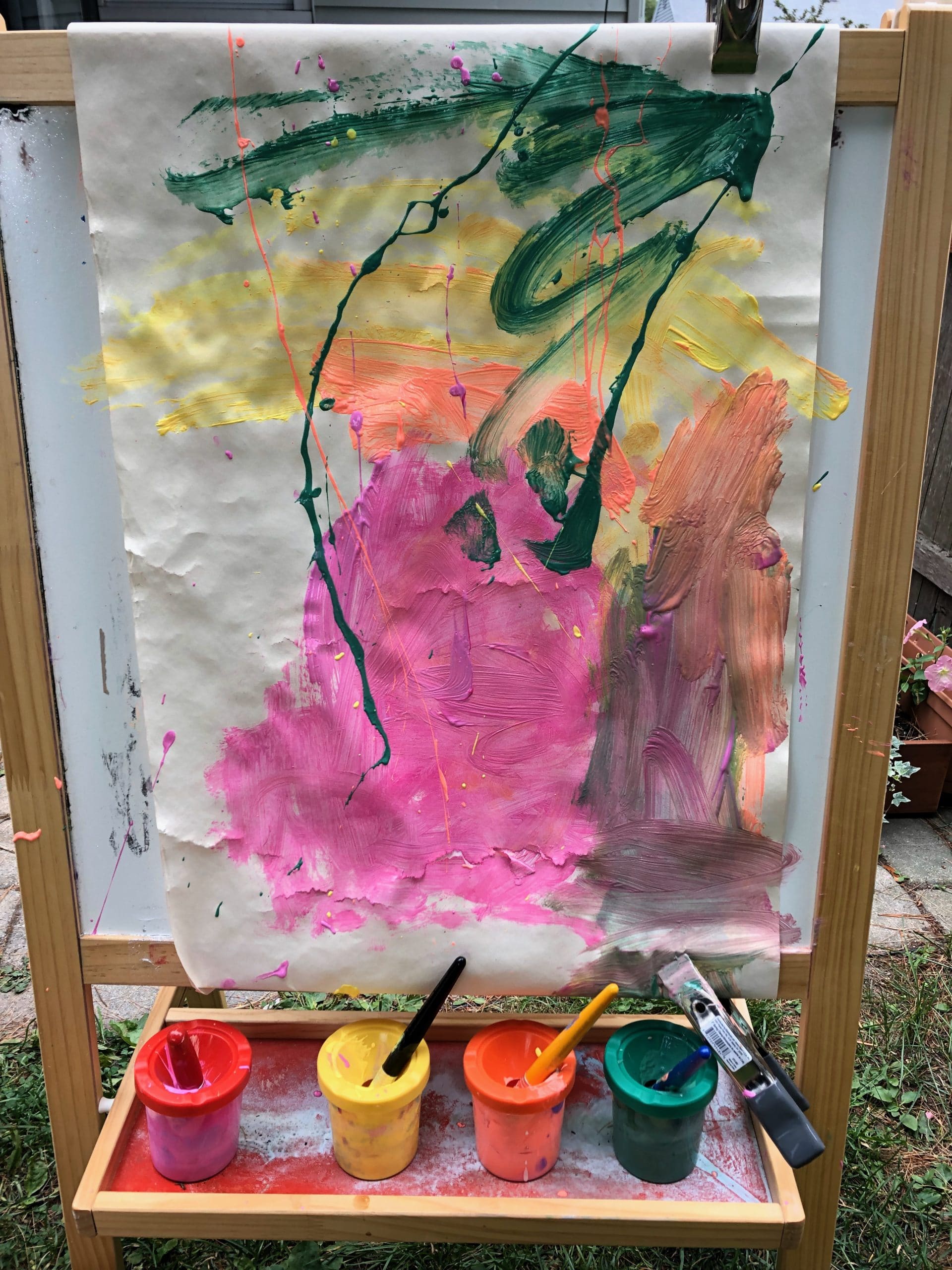
Art Furniture
1. Art Table
Any table will work, including the kitchen table. For little kids, a table they can work at standing up, though, is especially good. This adjustable 4 foot folding table is a great height and wipes down easily and works great for art classes.
This adjustable kids table is a nice on to have at home or this one for multiple children.
Or you might choose to wall mount a fold-down desk along the window or wall..
2. Sensory Play Table
IKEA’s FLISAT table with TROFAST bins is a wonderful sensory play table for kids. With the cover on, it’s also a perfectly fine drawing desk for younger kids (toddler/preschooler).
3. Easel
We still use and love our Melissa and Doug adjustable easel! If we’ve calculated correctly, it’s given us a good 7 years of art-making service so far.
4. Kids Tabletop Easel or Wall-Mounted Easel
If you just don’t have the space for a regular easel, how about a tabletop easel or a wall-mounted piece of plexiglass.
5. Drawing Desk
We LOVE this slanted surface drawing desk for both drawing and for homework. It is both well-made and economical.
Tools to Store and Organize Art Supplies
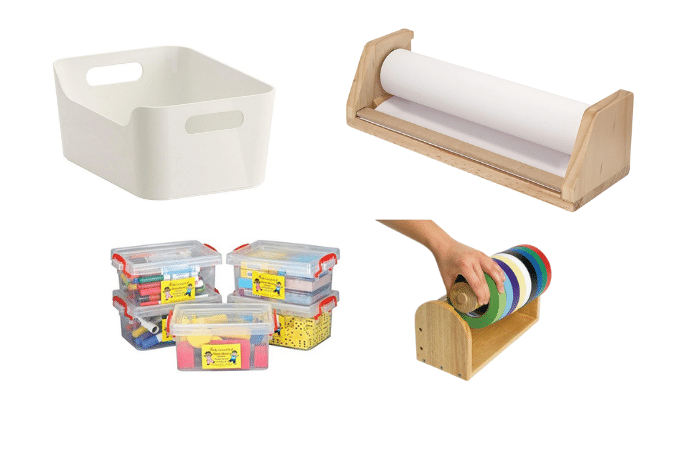
1. Shelves, dresser, or cabinet.
For storing your art supplies.
2. Storage Bins
We have bins from Ikea, but storage bins or any boxes work well for storing artwork or paints. We have one for tempera paint, one for liquid watercolors, one for printmaking supplies, etc. That way, I can grab one bin down from a shelf rather than try to juggle 10 paint bottles.
3. Table-Top Paper Roll Holder
This paper holder is what we use, and makes working with big rolls of paper much easier. IKEA’s paper holder also works well.
4. Masking Tape Holder and Dispenser
We have one of these tape holders for our colored masking tape. It looks great on the studio shelf and keeps all the tapes organized and in-view. However, we don’t find it very easy to use for actually dispensing the tape. We often find ourselves taking a roll of tape off the dispenser, bringing it with us to the art table, and using it on its own—either tearing the tape with our hands or using scissors to cut pieces off.
A Few Other Art Tools for Your Art Closet
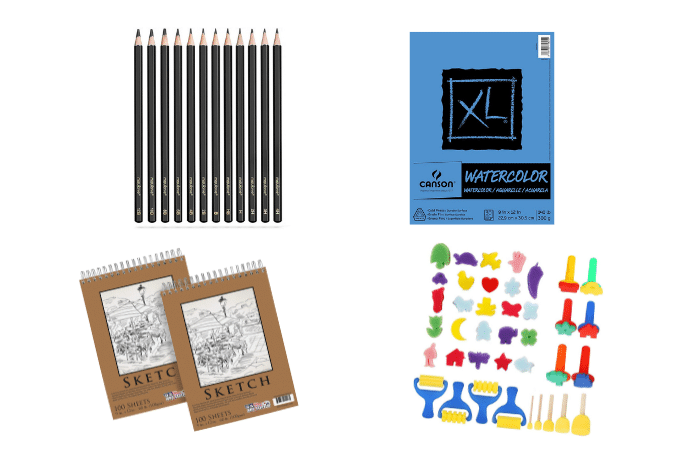
1. Graphite pencil
A good graphite pencil set is nice for older kids who love sketching. Check out these drawing ideas for kids!
2. Sponges
Sponge painting is a fun opportunity for kids to explore paint, learn colors, and tune up their fine motor skills. Different sponge sizes and shapes allow children to explore a different way of painting.
3. Watercolor Paper
Watercolor paper is good to have because it is thick and made for wet media. The kids can explore different watercolor techniques and experiment with watercolor paint.
4. Sketchbook
In addition to watercolor paper, it never hurts to have a few sketchbooks laying around the house too. That way, the kids can grab a sketchbook and their favorite marker set and go to work creating new masterpieces for the refrigerator.
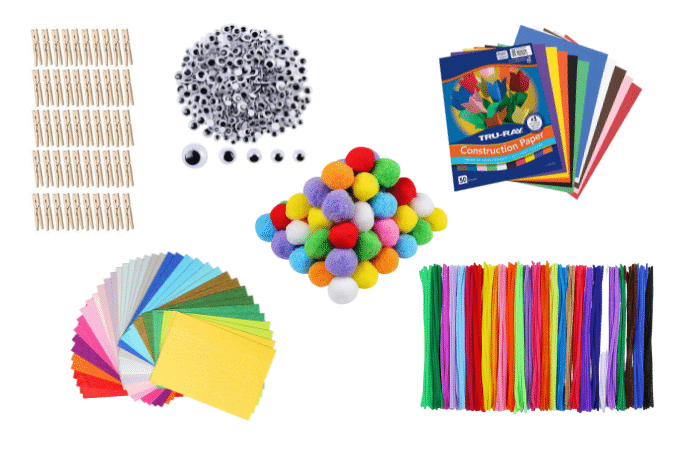
5. Collage Supplies
A great art project to work on with the kids is a collage, so you want to have all the best collage supplies at your fingertips. This means colored tissue paper, feathers, pom poms, yarn, fabric scraps, googly eyes, and stickers. The kids can even gather up their paper scraps and turn them into Pablo Picasso collage masterpieces.
6. Everyday Objects
Finally, having a good assortment of some everyday objects can also come in handy as you create the best kids art tools set. Some everyday objects include construction paper, beads, clothespins, and pipe cleaners. You can also let the kids get creative with empty toilet paper rolls, milk containers, and cardboard boxes.
Any important kids art tools that I missed? What would you add to this list? And feel free to argue with me about my choice of “best”—I certainly haven’t tried everything out there! And everyone’s situation and preferences are different.
More Kids Art Supplies
- The 25 Best Kids Art Supplies!
- The BEST Baby Art Supplies
- The BEST Art Supplies for Toddlers
- Do You Need Help Choosing the BEST Paper for Children and Kids Art?
- The Artful Parent’s Favorite Budget Art Supplies for Kids
- Homemade Art Materials for Kids
Pin it for Later
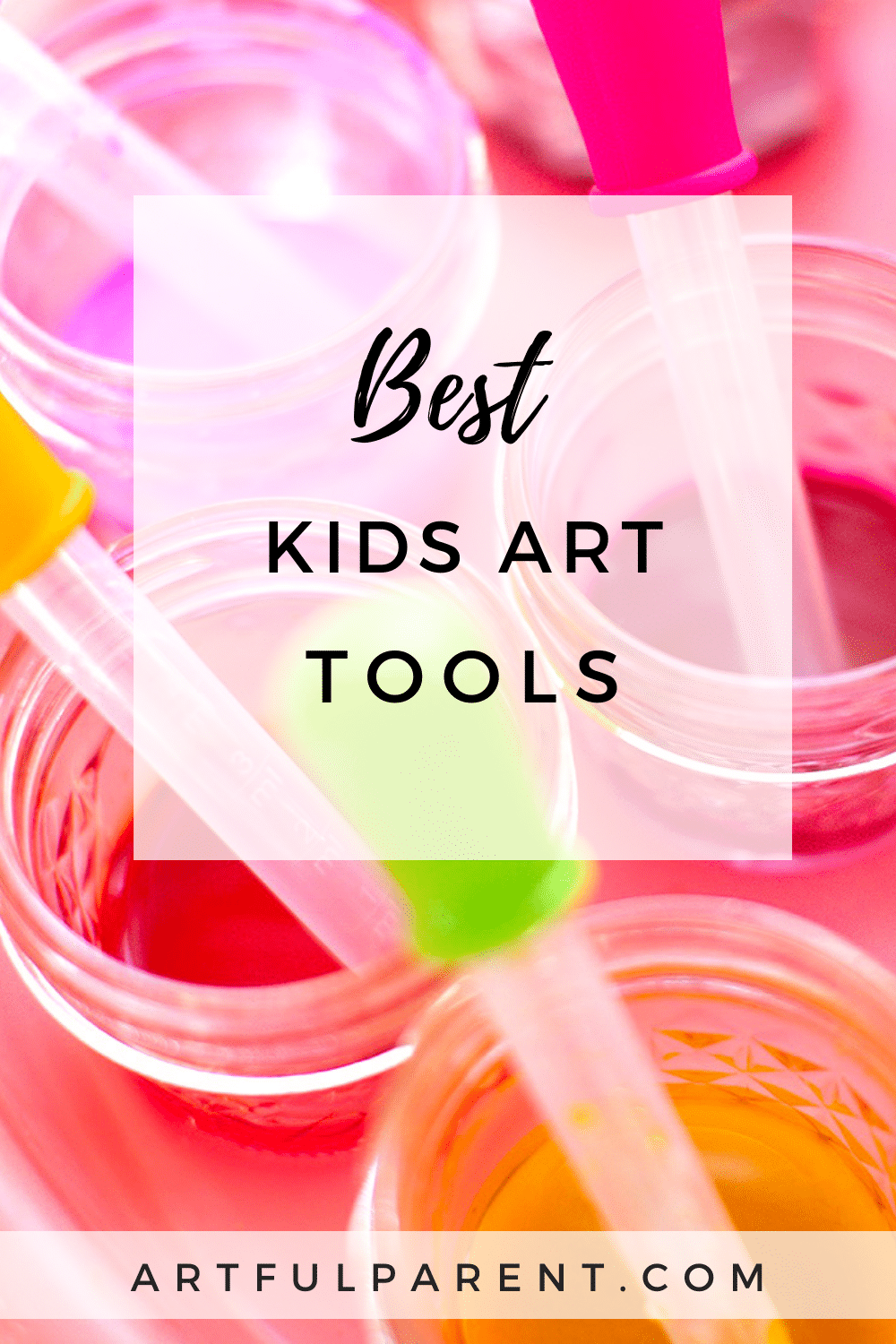
The post The Best Art Tools for Kids appeared first on The Artful Parent.
